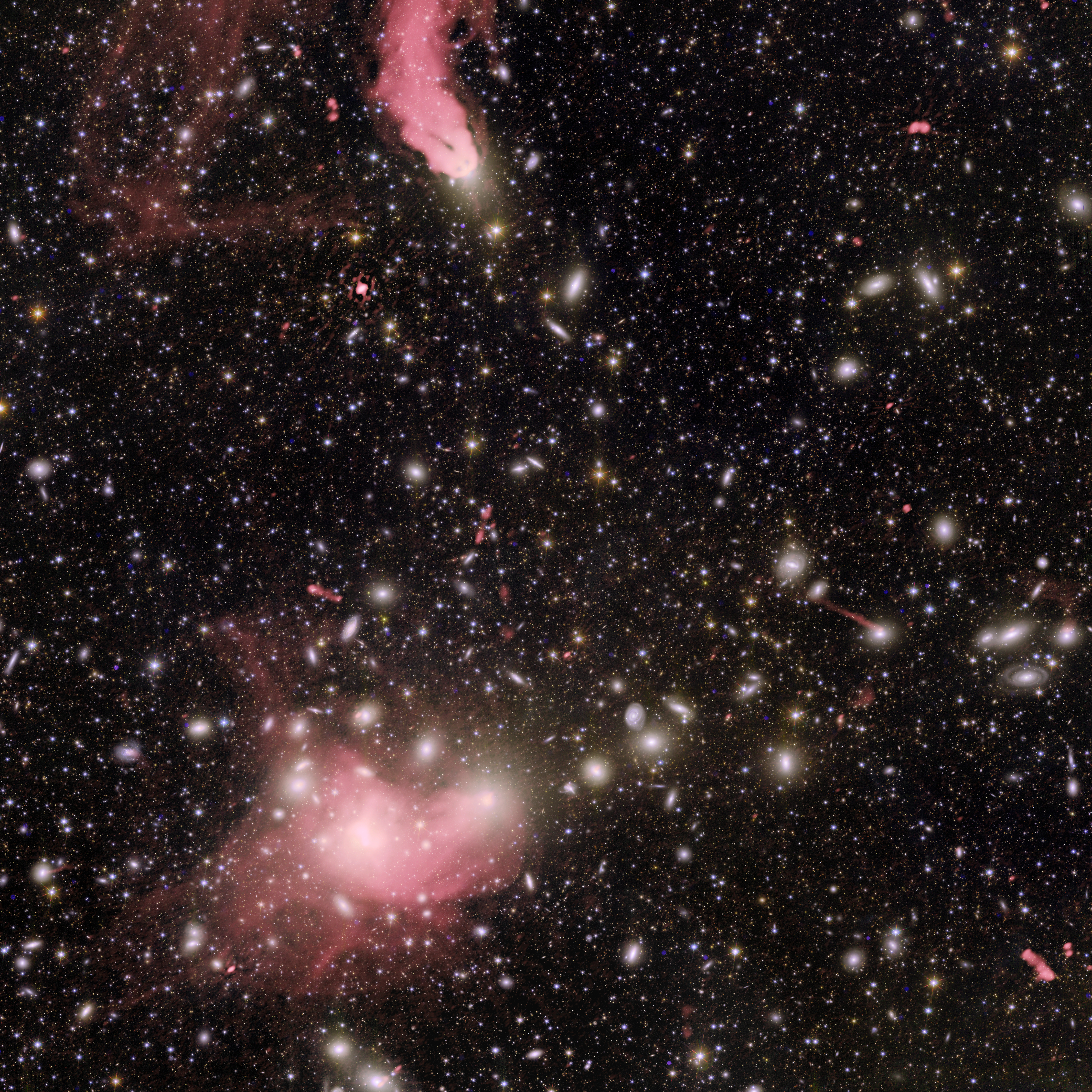| Description: | Hiding in plain sight is a view of the Universe our human eyes are not used to seeing. Namely, that of radio-wave-emitting plasma. This radio emission mostly originates from black hole activity and interactions between galaxies and each other, or their environment such as in galaxy clusters. One spectacular example of such a galaxy cluster is the Perseus cluster depicted here. In this image we see a composition of 8 hours of LOFAR HBA data in a pink hue, overlaid on the recently released Euclid image as background. The radio emission reveals a cosmic ballet of galaxies, their central supermassive black holes and the so-called ``intracluster medium'' (ICM).
Buried in that ICM, near the bottom-left corner, sits NGC 1275; the brightest member of the cluster. The ICM is a hot, tenuous gas that permeates the cluster, heated by this central galaxy. Its low density makes it hard to detect, except for near the central galaxy. Its presence is revealed, however, by radio emission from from other galaxies such as NGC 1265 at the top. The jets emitted by the black hole leave behind a massive tail of radio emitting plasma, as if blown away like smoke in the wind. Only here it is not a wind, but the movement of NGC 1265 through the ICM causing the large tail of emission. Dotted around the image are smaller tails and finally, many other blobs and double-lobed radio plumes from galaxies in or behind the cluster. |

